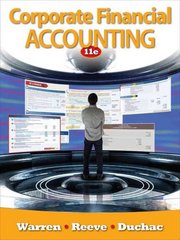Build a Model Chapter: Problem: 11/26/2018 6 15 a. Use the data given to calculate annual returns for Goodman, Landry, and the Market Index, and then calculate average returns over the five-year period. (Hint: Remember, returns are calculated by subtracting the beginning price from the ending price to get the capital gain or loss, adding the dividend to the capital gain or loss, and dividing the result by the beginning price. Assume that dividends are already included in the index. Also, you cannot calculate the rate of return for 2014 because you do not have 2013 data.) Data as given in the problem are shown below: Goodman Industries Year Stock Price Dividend 2019 $25.88 $1.73 2018 $22.13 $1.59 2017 $24.75 $1.50 2016 $16.13 $1.43 2015 $17.06 $1.35 2014 $11.44 $1.28 Landry Incorporated Stock Price $73.13 $78.45 $73.13 $85.88 $90.00 $83.63 Market Index Dividend Includes Divs. $4.50 17,495.97 $4.35 13,178.55 $4.13 13,019.97 $3.75 9,651.05 $3.38 8,403.42 $3.00 7,058.96 We now calculate the rates of return for the two companies and the index: Goodman Landry Index 2019 2018 2017 2016 2015 Average Note: To get the average, you could get the column sum and divide by 5, but you could also use the function wizard, fx. Click fx, then statistical, then Average, and then use the mouse to select the proper range. Do this for Goodman and then copy the cell for the other items. b. Calculate the standard deviation of the returns for Goodman, Landry, and the Market Index. (Hint: Use the sample standard deviation formula given in the chapter, which corresponds to the STDEV function in Excel.) Use the function wizard to calculate the standard deviations. Goodman Landry Index Standard deviation of returns c. Construct a scatter diagram graph that shows Goodman's and Landry' returns on the vertical axis and the Market Index's returns on the horizontal axis. It is easiest to make scatter diagrams with a data set that has the X-axis variable in the left column, so we reformat the returns data calculated above and show it just below. Year Index 0.0% 0.0% 0.0% 0.0% 0.0% 2019 2018 2017 2016 2015 Goodman 0.0% 0.0% 0.0% 0.0% 0.0% Landry 0.0% 0.0% 0.0% 0.0% 0.0% To make the graph, we first selected the range with the returns and the column heads, then clicked the chart wizard, then choose the scatter diagram without connected lines. That gave us the data points. We then used the drawing toolbar to make free-hand ("by eye") regression lines, and changed the lines color and weights to match the dots. d. Estimate Goodman's and Landry's betas as the slopes of regression lines with stock returns on the vertical axis (y-axis) and market return on the horizontal axis (x-axis). (Hint: use Excel's SLOPE function.) Are these betas consistent with your graph? Goodman's beta = Landry' beta = e. The risk-free rate on long-term Treasury bonds is 6.04%. Assume that the market risk premium is 5%. What is the expected return on the market? Now use the SML equation to calculate the two companies' required returns. Market risk premium (RPM) = Risk-free rate = 5.000% 6.040% Expected return on market = = = Required return Risk-free rate 6.040% 11.040% + + Market risk premium 5.000% = Goodman: Required return = = Landry: Required return = = f. If you formed a portfolio that consisted of 50% Goodman stock and 50% Landry stock, what would be its beta and its required return? The beta of a portfolio is simply a weighted average of the betas of the stocks in the portfolio, so this portfolio's beta would be: Portfolio beta = g. Suppose an investor wants to include Goodman Industries' stock in his or her portfolio. Stocks A, B, and C are currently in the portfolio, and their betas are 0.769, 0.985, and 1.423, respectively. Calculate the new portfolio's required return if it consists of 25% of Goodman, 15% of Stock A, 40% of Stock B, and 20% of Stock C. Beta Goodman Stock A Stock B Stock C 0.769 0.985 1.423 Portfolio Weight 25% 15% 40% 20% 100% Portfolio Beta = Required return on portfolio: = = = Risk-free rate + Market Risk Premium * Beta %. What is the turns







